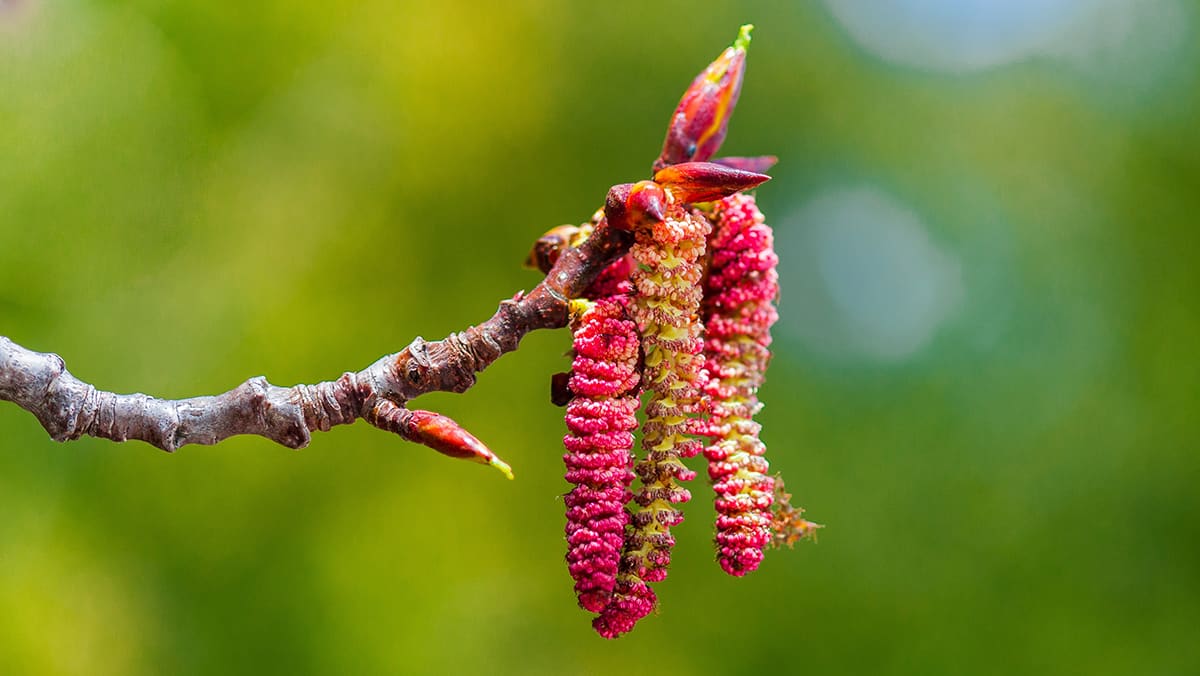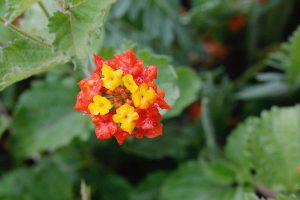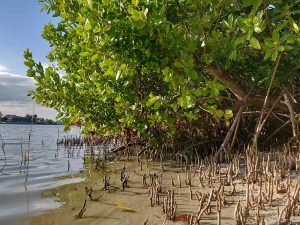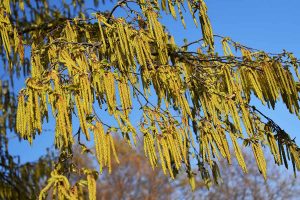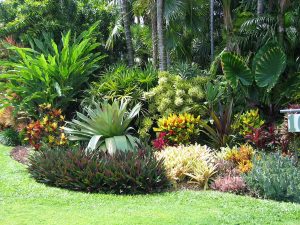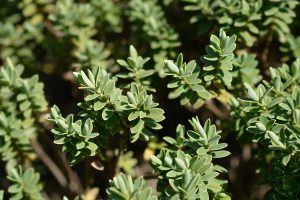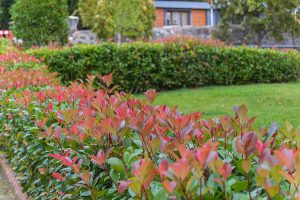Clay soil is not known for being the best growing medium for plants, and many gardeners will battle to alter the composition of their native clay soil to help plants thrive.
An easier solution to altering the clay soil in your garden might actually be to accept the condition of your soil and work with it by choosing plants that will thrive in clay. There are many plants that will tolerate clay soils, and even some that prefer these kinds of environments.
One of the biggest issues with clay soil is that it is slow to drain, which means that the plants growing in clay soil will have their roots exposed to wet conditions for extended periods of time during rainy seasons.
This means that if you live in a climate that experiences a generous amount of rainfall, you will not only need to find plants that can tolerate clay soils but also those which can grow in wet clay soils.
Table of Contents
What is Wet Clay Soil?
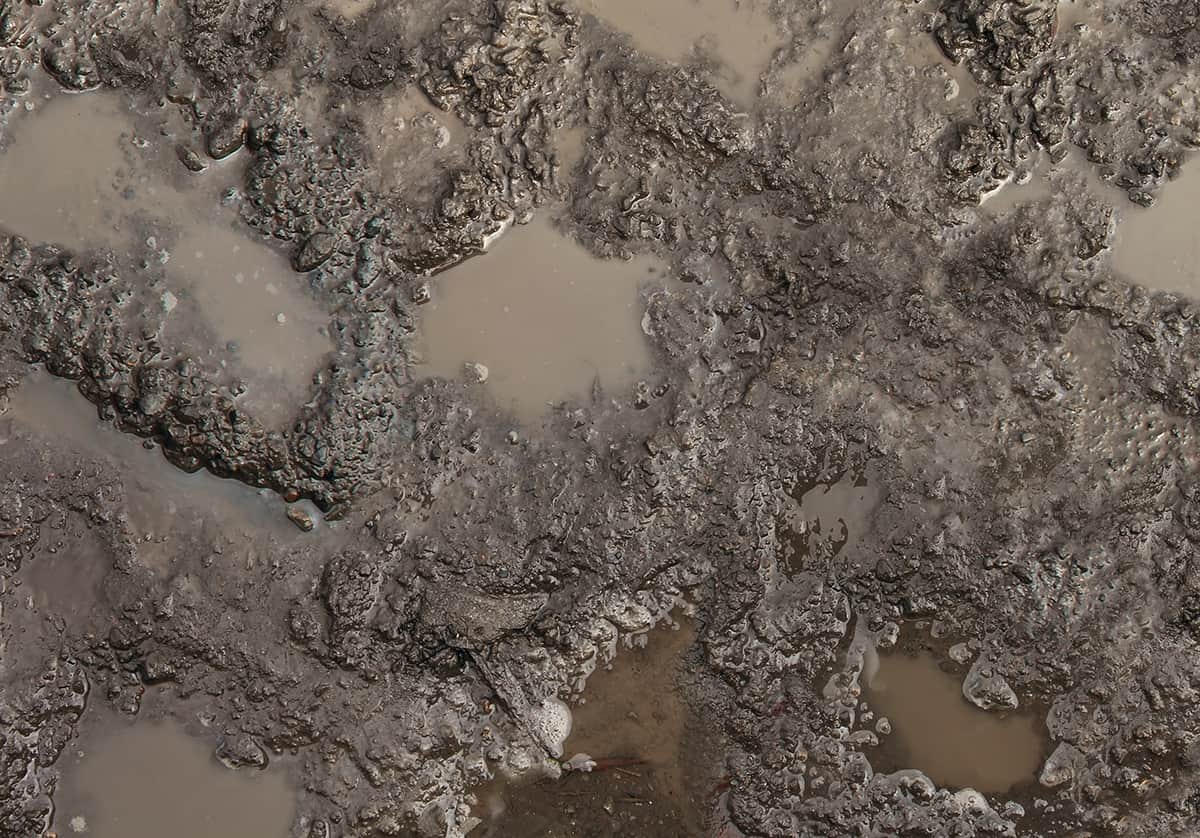
Clay soil is made up of over 50% clay particles, and it is quite low in organic matter compared with other types of soil. However, it does have a high nutrient concentration. Clay soil will become sticky when it gets wet and has a tendency to become compacted underfoot. When dry, clay soil will crack.
The main problem with clay soil is that it doesn’t drain well, which means when it rains, the soil becomes, and stays, very wet. The way that wet clay soil becomes compacted also means that plant roots can struggle to penetrate through the soil to grow.
Many areas have native clay soil, which can be a challenge to grow plants in, and there are ways you can amend the soil to help improve its drainage; however, there are also a number of plants that will thrive in wet clay soil.
Wet Clay Soil Qualities
Moisture retentive
Clay soil is great at retaining moisture, which makes it well-suited to plants that thrive in wet conditions. The ability of soil to retain moisture comes down to particle size. Clay has fine particles compared to other types of soils, for example, sandy soils, which have coarse particles.
The water molecules are able to cling onto fine particles more easily, which is why clay has such great water retention. This can be a problem for many plants, which do not like to have their roots held in wet conditions for sustained periods of time. However, it makes clay soil ideal for moisture-loving plants.
Slow draining
Clay soil is composed of fine particles that are densely packed together, and this can make it difficult for water to seep through. The result is slow-draining soil, which can be problematic for many plants which need to be grown in soil which drains well.
Alkaline
Clay soil will typically have a pH of around 8, which means it is alkaline soil. There are many types of plants that are happy to grow in alkaline soils. However, you should avoid plants that require acidic soils as these will struggle.
Heavy and dense
Clay soil is heavy soil, especially when wet. It is dense, which is one of the reasons why it cannot drain quickly, and the density also means that some roots can struggle to penetrate the soil.
Plants with weak root systems, in particular, can have trouble thriving in clay soils. The high density of clay soils can be an advantage for some plants, especially those which are vulnerable to sudden temperature changes around the roots. Because clay soil is heavy and dense, it takes a long time to warm up in hot temperatures and will also take longer to cool in winter than most other soil types.
Nutrient-rich
Despite not being rich in organic matter, clay soil is known to have a reasonably high nutrient level. It has high levels of calcium, magnesium, and potassium, which many plants need to survive.
Best Shrubs to Grow in Wet Clay
Smooth Alder
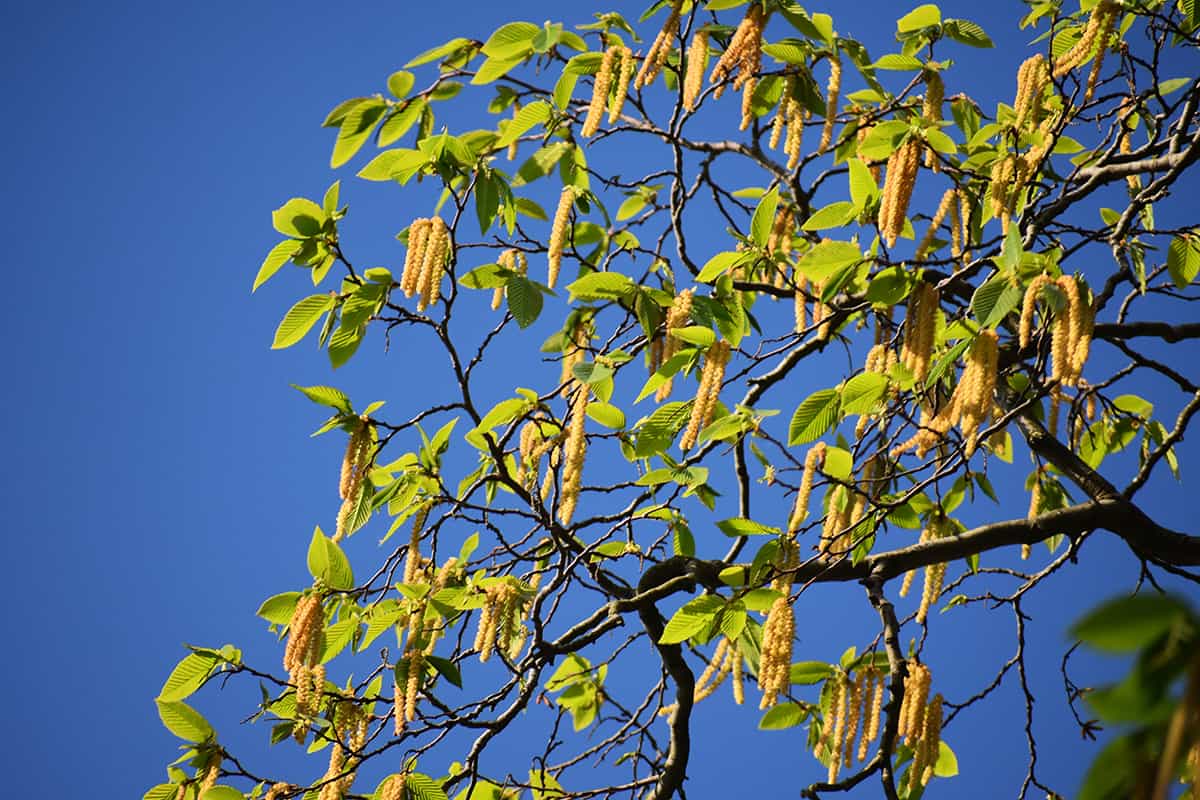
- Botanical name: Alnus serrulata
- Family: Betulaceae
- USDA hardiness zones: 4 – 9
- Mature height: 10 to 20 feet
- Mature spread: Up to 15 feet
The Smooth Alder is a North American native shrub, growing along the eastern side of the continent from Nova Scotia in Canada all the way down to Florida in the United States. It is also commonly known as the Black Alder or the Hazel Alder.
It forms a deciduous, densely branched thicket, covered in shiny green leaves through summer, which fades to yellow in fall before dropping from the shrub to reveal glossy, smooth brown-gray bark. During spring, dangling catkins of around 4 inches in length adorn the shrub, which eventually is replaced by fruits that resemble miniature pine cones.
Smooth Alder adapts well to a number of different growing conditions, being able to tolerate both drought and flooding, though it prefers soils that are consistently moist or wet. It will tolerate poor clay soils and is known to be able to fix the nitrogen content of soils. The plant is of huge significance to wildlife, providing shelter and food to birds and supporting over 200 species of caterpillars.
White Dogwood
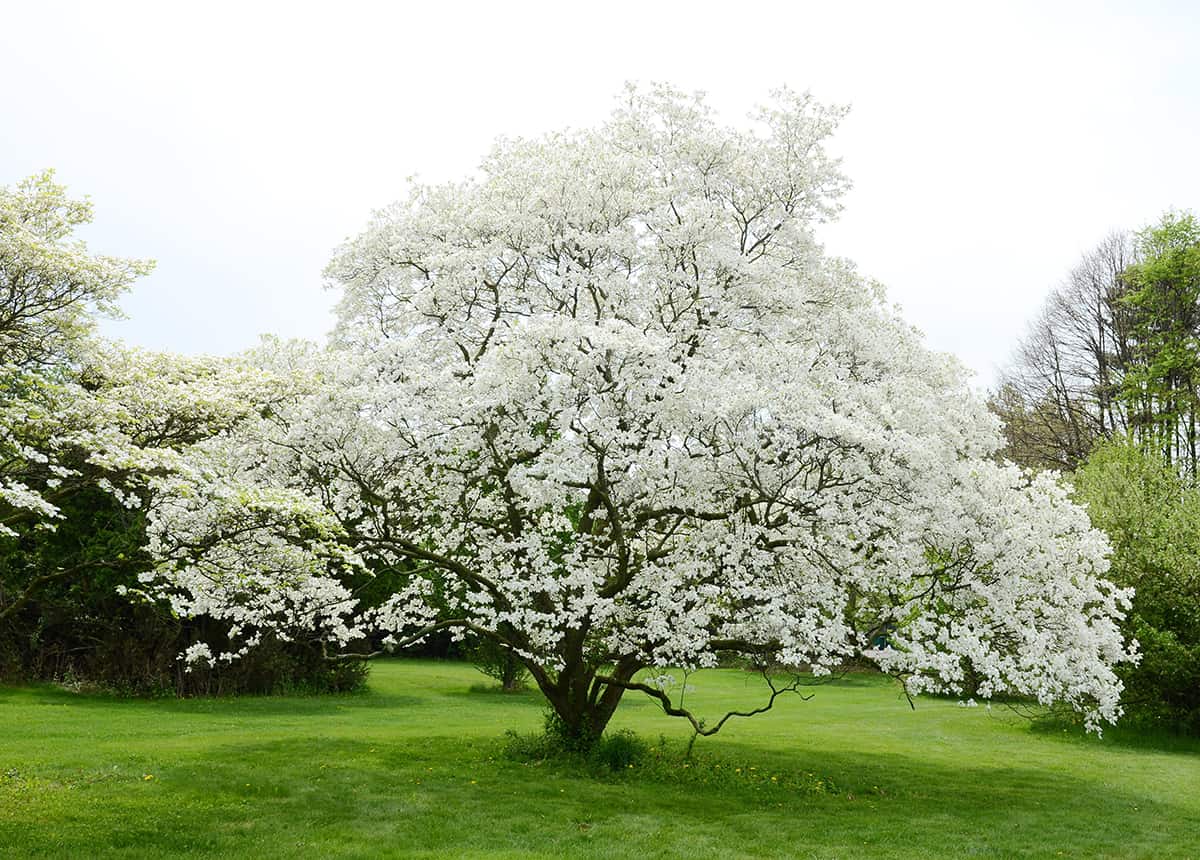
- Botanical name: Cornus alba
- Family: Cornaceae
- USDA hardiness zones: 2 – 7
- Mature height: Up to 10 feet
- Mature spread: Up to 10 feet
White Dogwood is so-called due to the white flowers it produces in late spring. It is also known as Siberian Dogwood or Tatarian Dogwood and has the bright red vertical stems and twigs you would typically associate with Dogwood. This is a deciduous shrub that spreads via suckers. It adds interest to the garden through all seasons and grows rapidly at a rate of between 1.5 and 2 feet per year, to reach eventual heights of between 8 and 10 feet.
The White Dogwood is exceptionally easy to care for, enjoying light exposure anywhere from full sun through to partial shade. It adapts well to most soil types, including clay or poor soils, and will thrive in soils that are wet or dry. There are other types of Dogwood that can also be grown in wet clay soils, including Pagoda dogwood (Cornus alternifolia), Silky Dogwood (Cornus amomum), and Bloodtwig Dogwood (Cornus sanguinea).
Black Mangrove
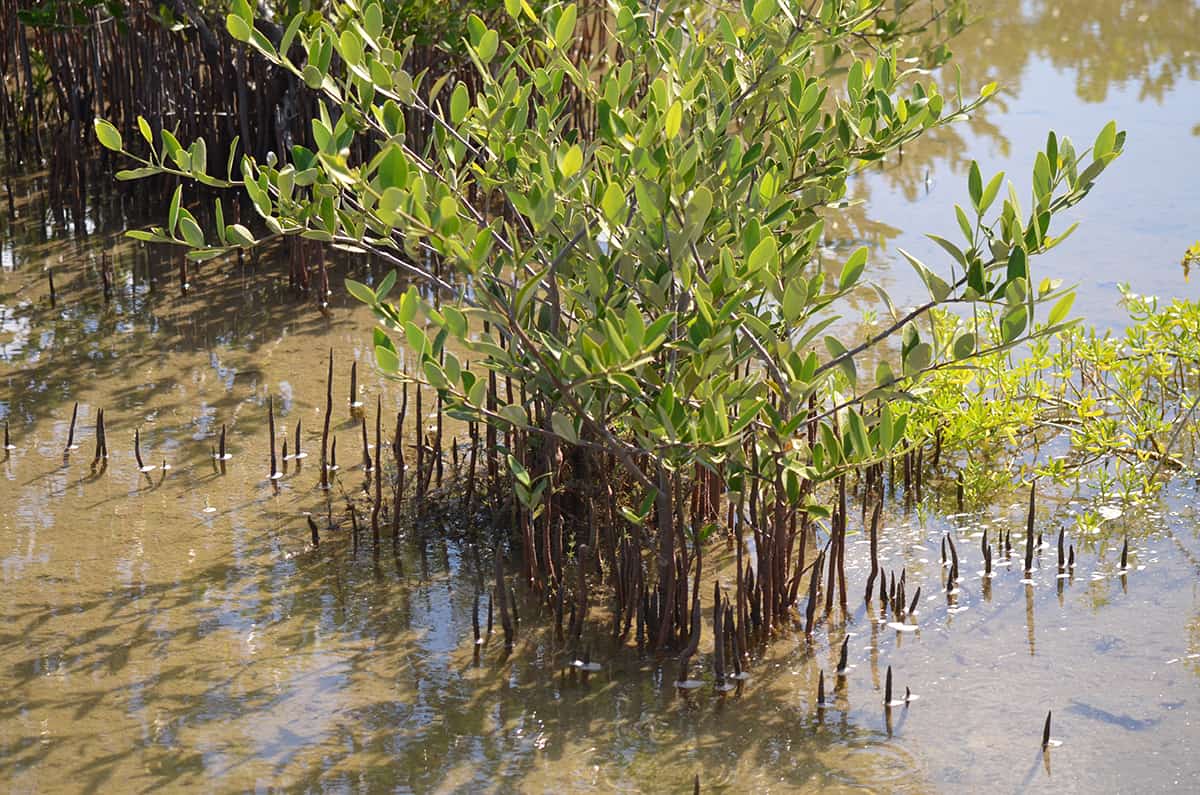
- Botanical name: Avicennia germinans
- Family: Acanthaceae
- USDA hardiness zones: 9 – 11
- Mature height: 10 to 40 feet
- Mature spread: 10 to 30 feet
This is a moisture-loving evergreen shrub or tree which is native to the southern United States, as well as coastal regions of South America and tropical Africa. Its locality will affect its eventual size, with Louisiana Black Mangrove rarely exceeding 9 feet in height, while Black Mangroves in Florida can grow over four times this size.
It is commonly found growing along the banks of rivers, swamps, and seawater. The plant has spreading branches that form a crown covered in dense, thick leaves. It can also spread to create a hedge or privacy screening and is particularly well suited to help stabilize banks because the root systems can prevent soil erosion.
The Black Mangrove flowers all year round, with small white blossoms appearing on the tips of branches. These are popular with pollinators and are essential in the production of mangrove honey. The flowers are followed by fruits which take the form of seed capsules, and these can burst open while still attached to the plant, exposing the inner seeds.
As a plant that natively grows along the coast and shores of bodies of water, the Black Mangrove is accustomed to thriving in wet or waterlogged soil. It is able to tolerate any soil type which is constantly wet, including sandy and clay soils. It prefers to be grown in full sun, and is able to withstand extremely harsh winds and storms, as well as salt in both the air and the water.
Loblolly Bay
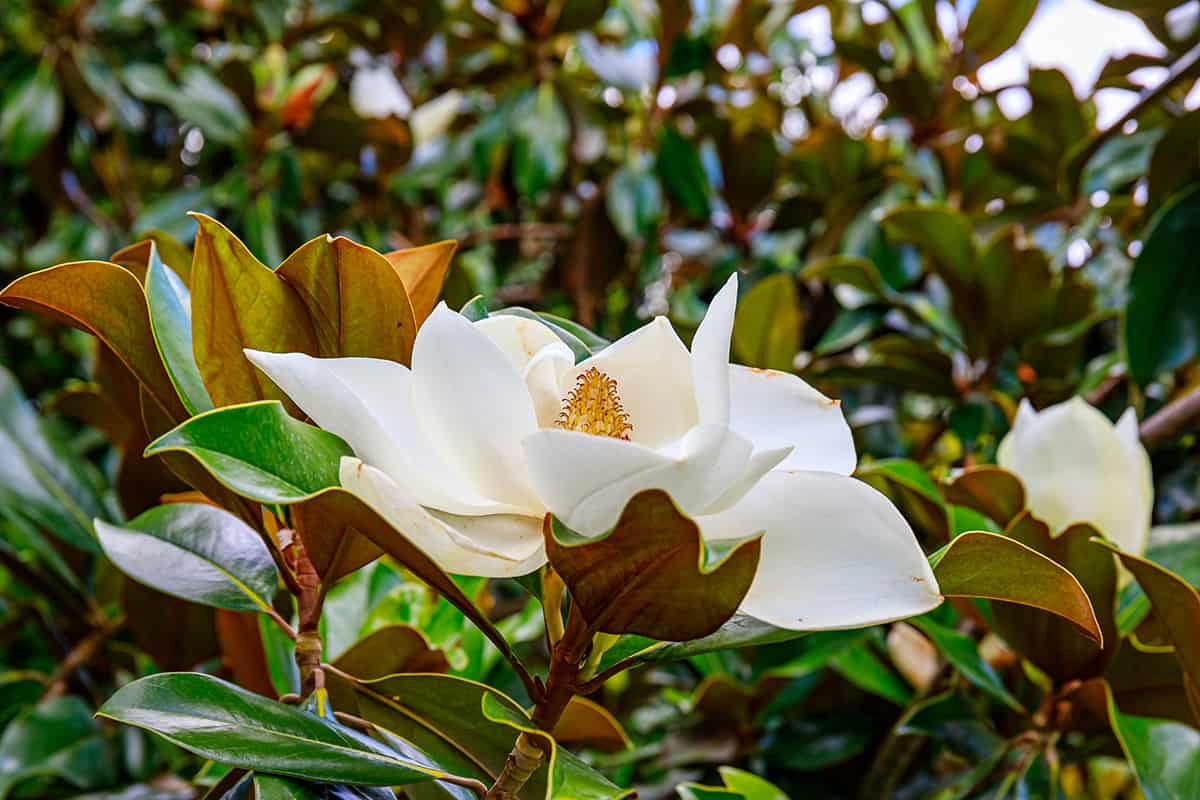
- Botanical name: Gordonia lasianthus
- Family: Theaceae
- USDA hardiness zones: 7 – 9
- Mature height: 30 to 60 feet
- Mature spread: 15 to 30 feet
The Loblolly Bay is an evergreen plant that can be grown as a large shrub or medium-sized tree. It grows natively along the coast of the southeastern United States, as well as in swamplands in this region. The plant has a conical habit and produces attractive, elliptical-shaped leaves in dark green with a glossy texture.
Its flowers are white and resemble Camellia’s, and they have an extensive blooming period from early spring right through summer and into fall until they are destroyed by the first frost. This is an exceptionally attractive tree that provides interest all year round and is favored as an ornamental specimen.
It is ideal for planting in wet clay soil because it is adept at growing in soils that are wet or drain poorly and can withstand periods in waterlogged conditions. It will survive flooding but cannot tolerate drought. In dry periods, the Loblolly Bay will die if it is not watered since it has a shallow root system that cannot penetrate deep into the ground to find a source of moisture.
Possumhaw
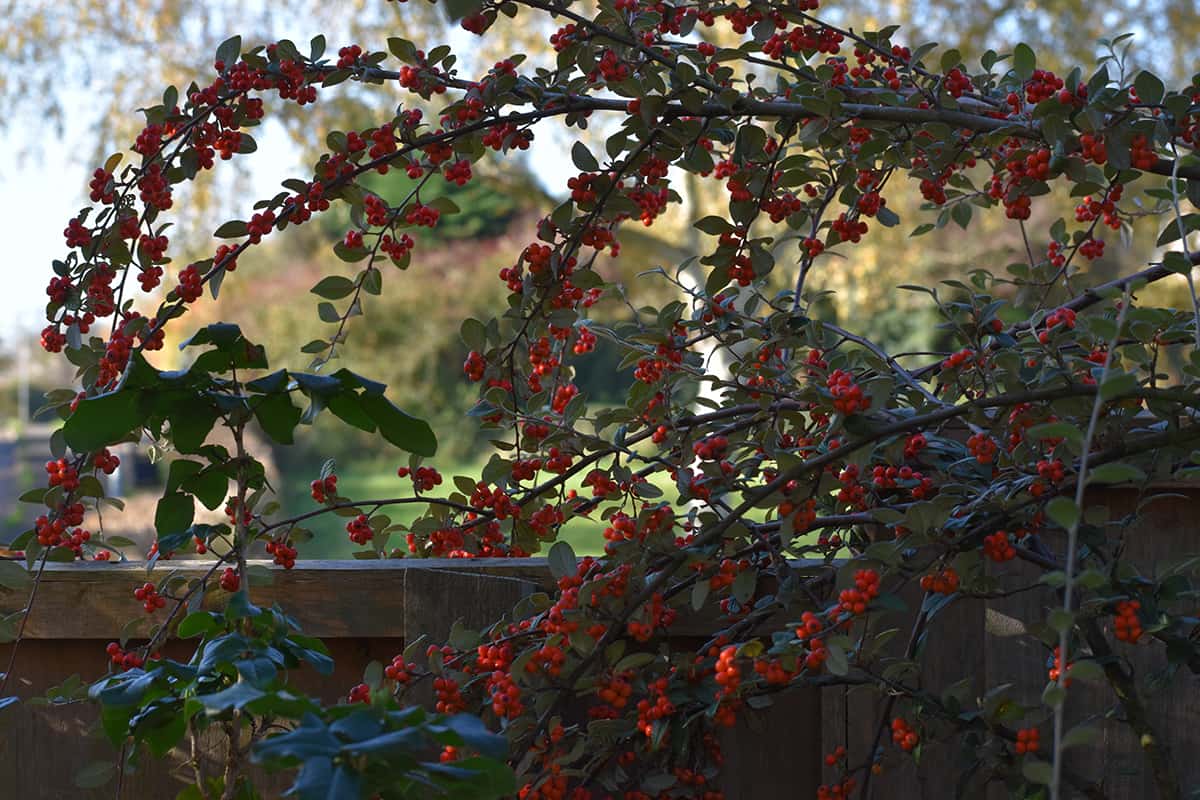
- Botanical name: Ilex decidua
- Family: Aquifoliaceae
- USDA hardiness zones: 5 – 9
- Mature height: Up to 15 feet
- Mature spread: Up to 12 feet
This is a deciduous species of holly that is native to the United States. It grows to form a shrub or small tree with shiny, green, toothed foliage, which fades to yellow in fall before being shed. The plant flowers are in abundance, with small white flowers that often go unnoticed. These develop into glossy bright red berries on female plants which have been pollinated and will remain on the tree to add showy interest throughout fall and winter.
The berries provide a source of food for birds and possums, for which the common name of the plant is a reference. Possumhaw can be grown as a single specimen, but it also works well to create informal hedging or privacy screening throughout the summer.
It grows well in wet clay soil because it has a preference for moist conditions and is tolerant of poorly draining soils. It can also thrive in dry conditions, making it a very low-maintenance shrub through every season.
Seashore Mallow
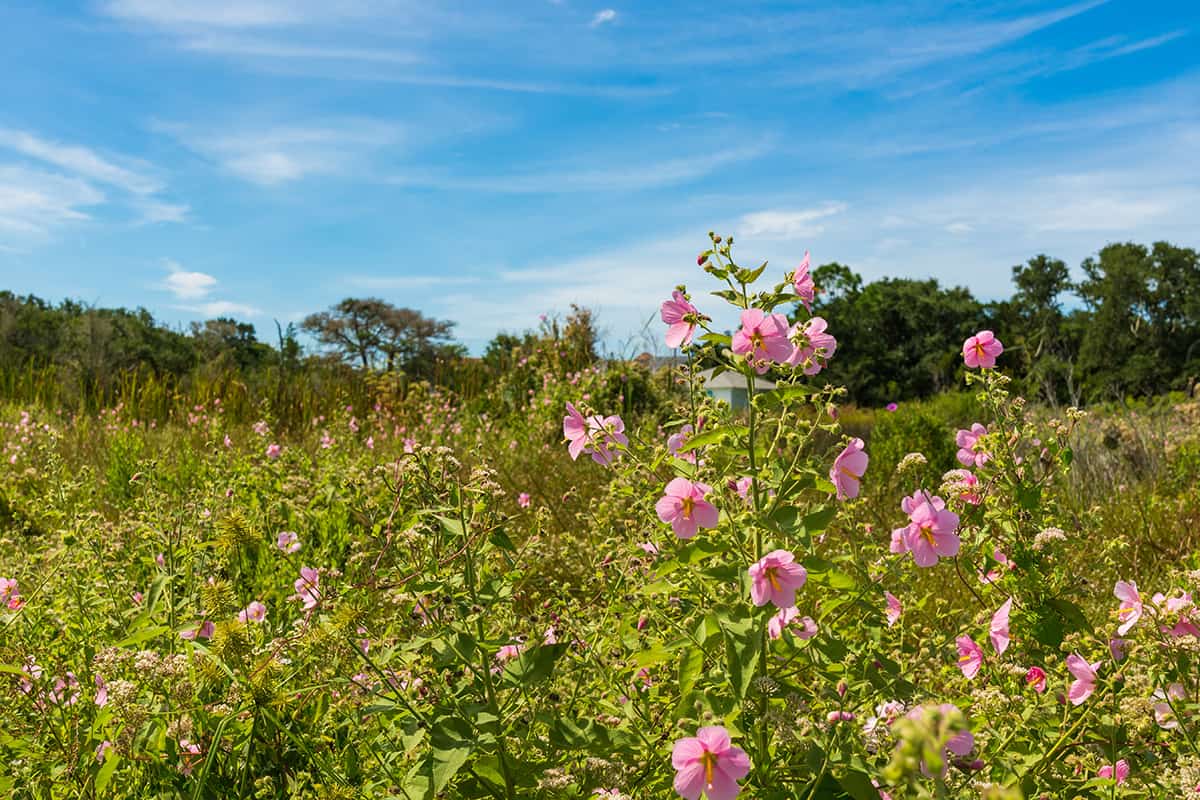
- Botanical name: Kosteletzkya pentacarpos
- Family: Malvaceae
- USDA hardiness zones: 6 – 10
- Mature height: Up to 5 feet
- Mature spread: Up to 3 feet
This shrub is native to the marshlands and coastline of the eastern United States. It is a perennial plant that produces pretty pink flowers from early summer right through to fall. Each flower will only bloom for a single day, but the plant buds so heavily that a vast number of flowers will always be in bloom at once.
The flowers typically measure around 3 inches across and are very popular with pollinators. The Seashore Mallow is ideal for growing in wet clay soil because it grows natively in wet conditions and has naturalized along the banks of rivers, ponds, and streams. It will thrive in shallow standing water and can also adapt well to regular garden conditions as long as the soil is kept moist.
This plant prefers sandy soils, but it tolerates clay soils well. It should be positioned in full sun and may need a sheltered site if it is not protected from winds.
Swamp Rose
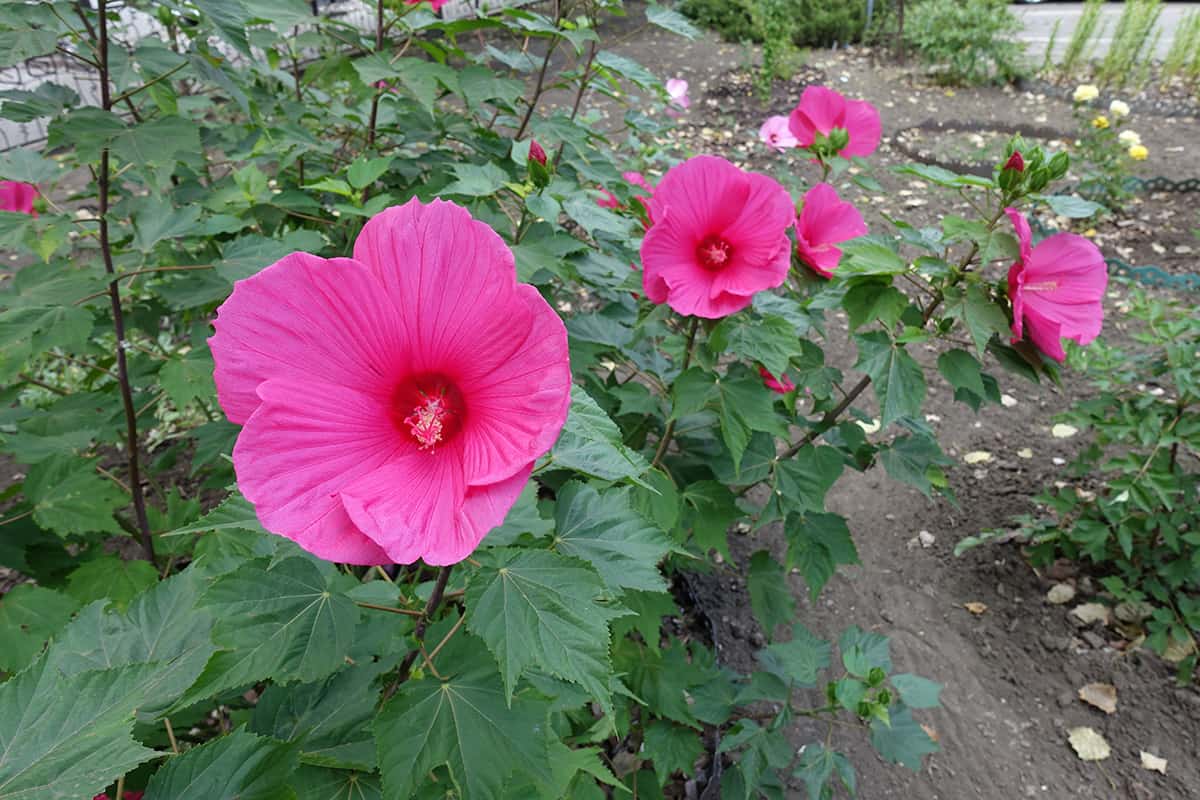
- Botanical name: Rosa palustris
- Family: Rosaceae
- USDA hardiness zones: 4 – 9
- Mature height: 3 to 8 feet
- Mature spread: 3 to 6 feet
The Swamp Rose is a flowering, deciduous shrub that is native to eastern North America, from Florida in the US up to Nova Scotia and New Brunswick in Canada. The rosy pink flowers it produces bloom from spring through to summer, emitting a strong, sweet fragrance.
The Swamp Rose grows well in boggy conditions, making it an ideal choice of plant for clay soils that are prone to waterlogging. It thrives even in standing water and should be positioned in full sun or partial shade.
